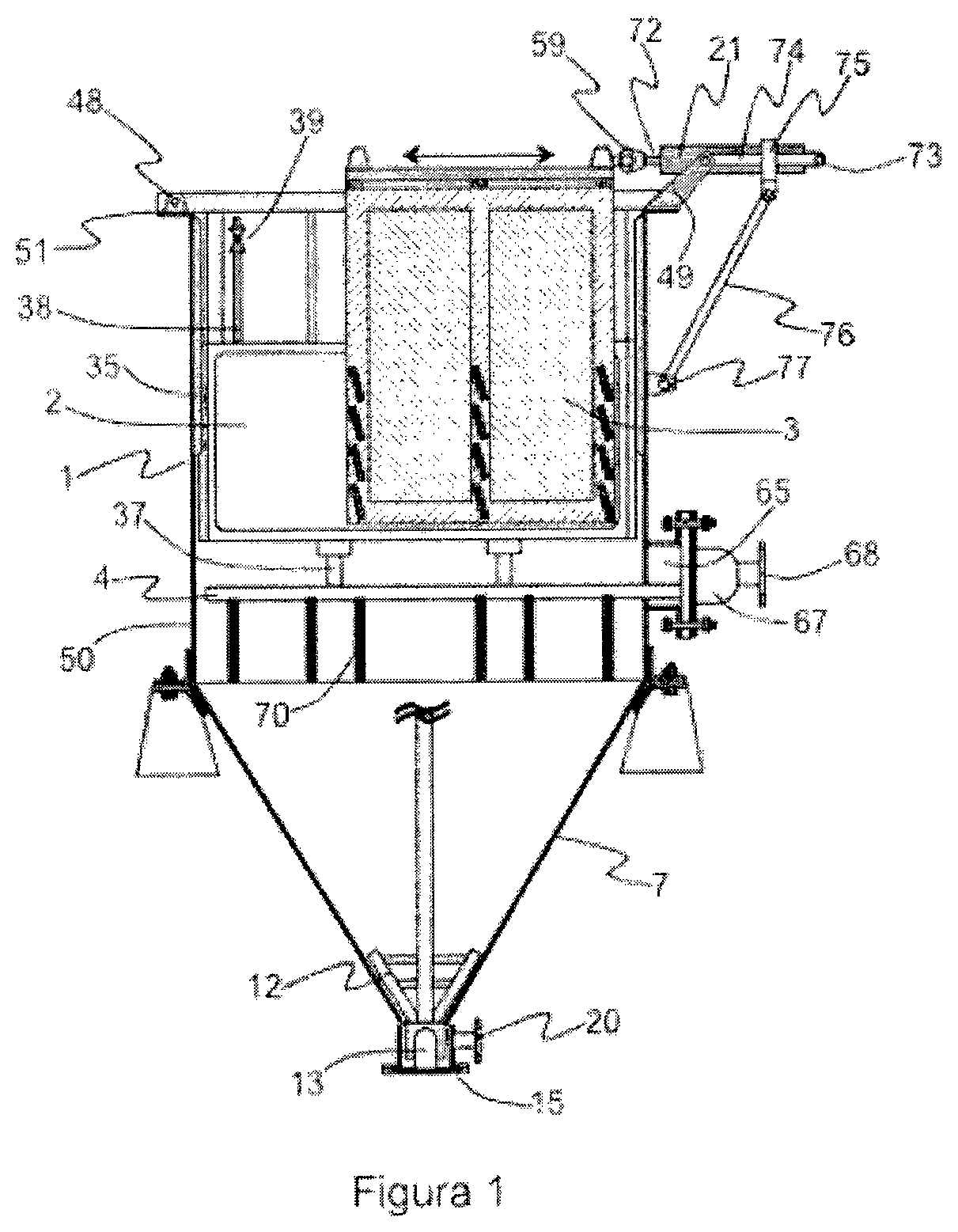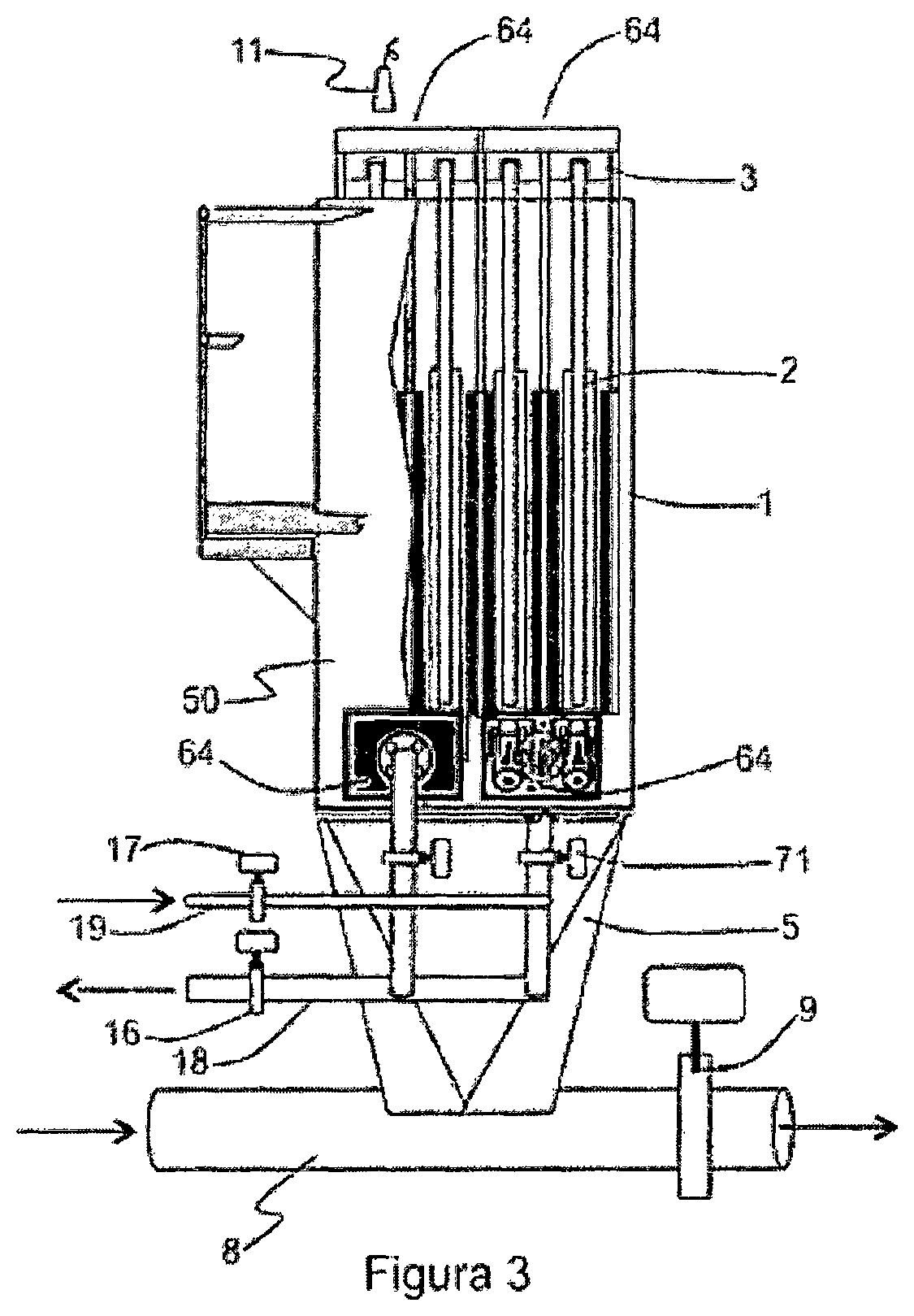Sludge dehydrator
a technology of sludge dehydrator and sludge dehydrator, which is applied in the direction of water treatment parameter control, specific water treatment objectives, sedimentation settling tanks, etc., can solve the problems of increasing equipment treatment capacity, increasing costs, and requiring more extensive maintenan
- Summary
- Abstract
- Description
- Claims
- Application Information
AI Technical Summary
Benefits of technology
Problems solved by technology
Method used
Image
Examples
Embodiment Construction
[0028]With reference to FIGS. 1 and 2, the “sludge dehydrator” invention (1) consists of an equipment for extracting portions of clarified or partially clarified water from sludge or watery pastes, as well as from turbid water having substantial contents of solids in suspension, in all cases by increasing the density of the muddy material or watery paste. The mechanism for removing the clarified or partially clarified water is carried out with a modified submerged filter, which reaches a high capacity vis-à-vis that of the original Chilean Patent No. 44,264; in this way the dehydrated sludge is settled, concentrated and discharged through the lower cone of the “sludge dehydrator” (1).
[0029]The modified submerged filter consists of the set made up by a suction plate (2) and a cleaning car (3). The suction plate (2) is connected to the suction pipe (4) that extracts the absorbed water; the solids are retained in the filtering cloth or membrane (25); the cleaning car (3) is moved and t...
PUM
| Property | Measurement | Unit |
|---|---|---|
| density | aaaaa | aaaaa |
| concentration | aaaaa | aaaaa |
| fluidity | aaaaa | aaaaa |
Abstract
Description
Claims
Application Information
 Login to View More
Login to View More - R&D
- Intellectual Property
- Life Sciences
- Materials
- Tech Scout
- Unparalleled Data Quality
- Higher Quality Content
- 60% Fewer Hallucinations
Browse by: Latest US Patents, China's latest patents, Technical Efficacy Thesaurus, Application Domain, Technology Topic, Popular Technical Reports.
© 2025 PatSnap. All rights reserved.Legal|Privacy policy|Modern Slavery Act Transparency Statement|Sitemap|About US| Contact US: help@patsnap.com



